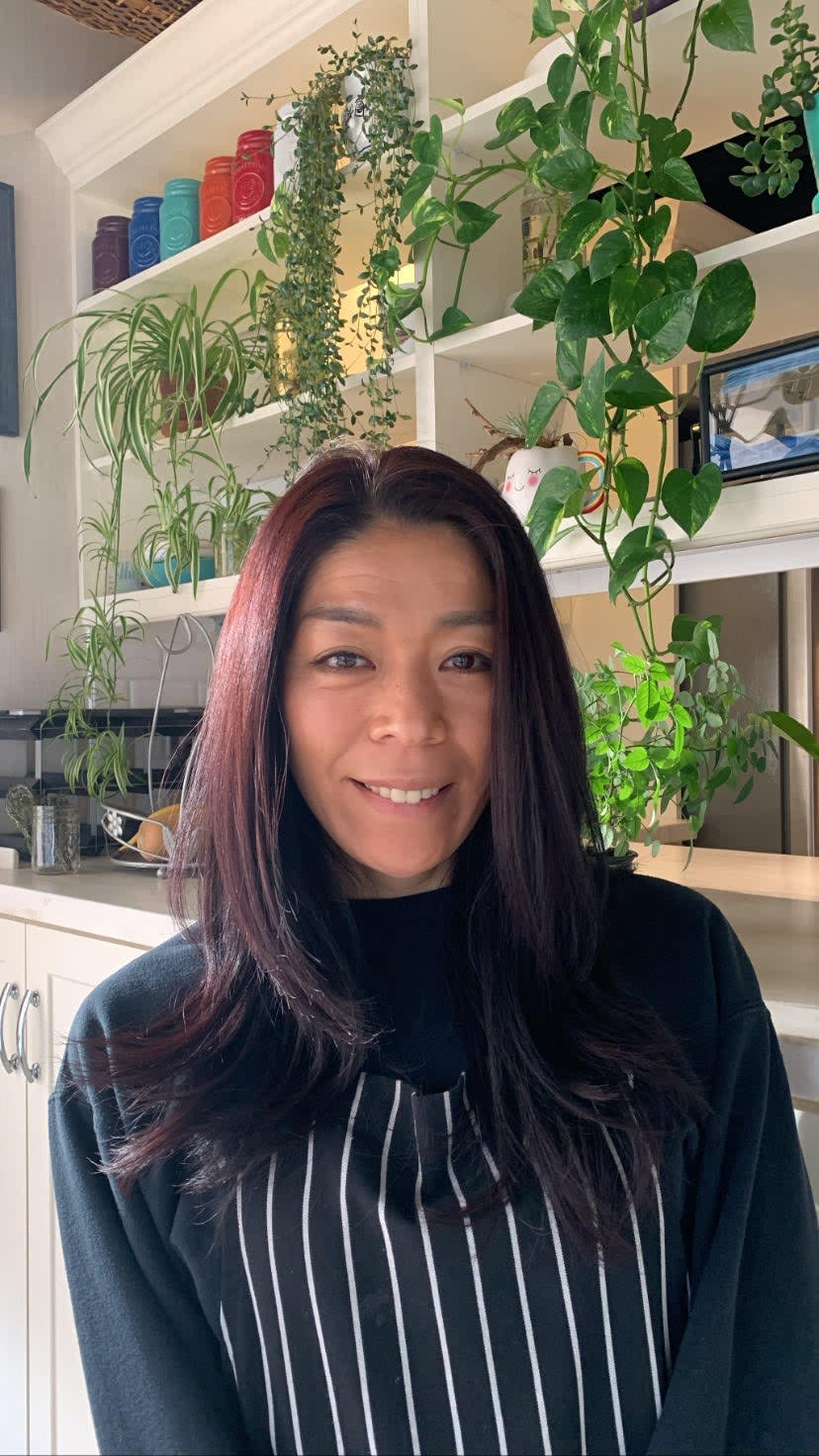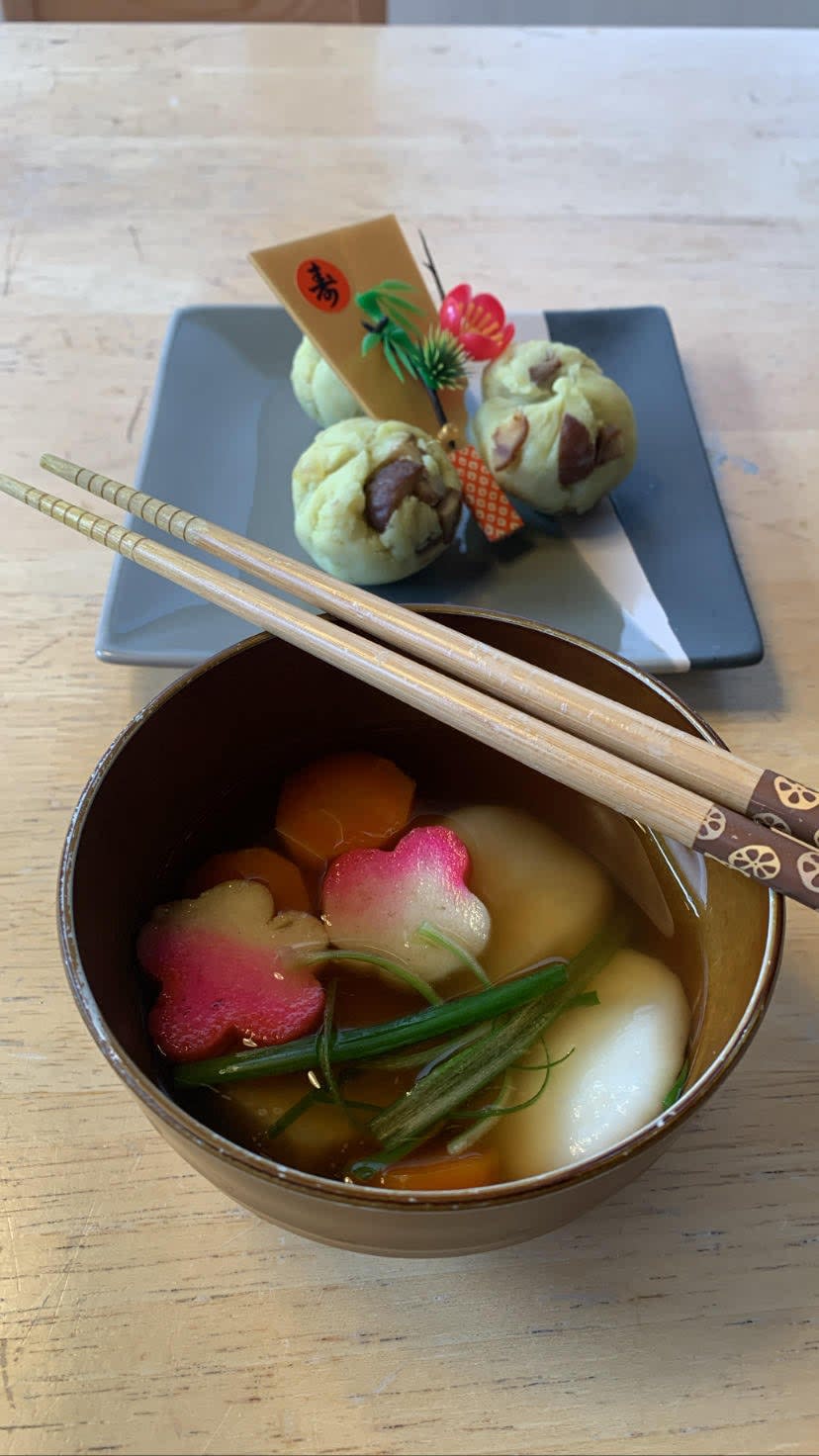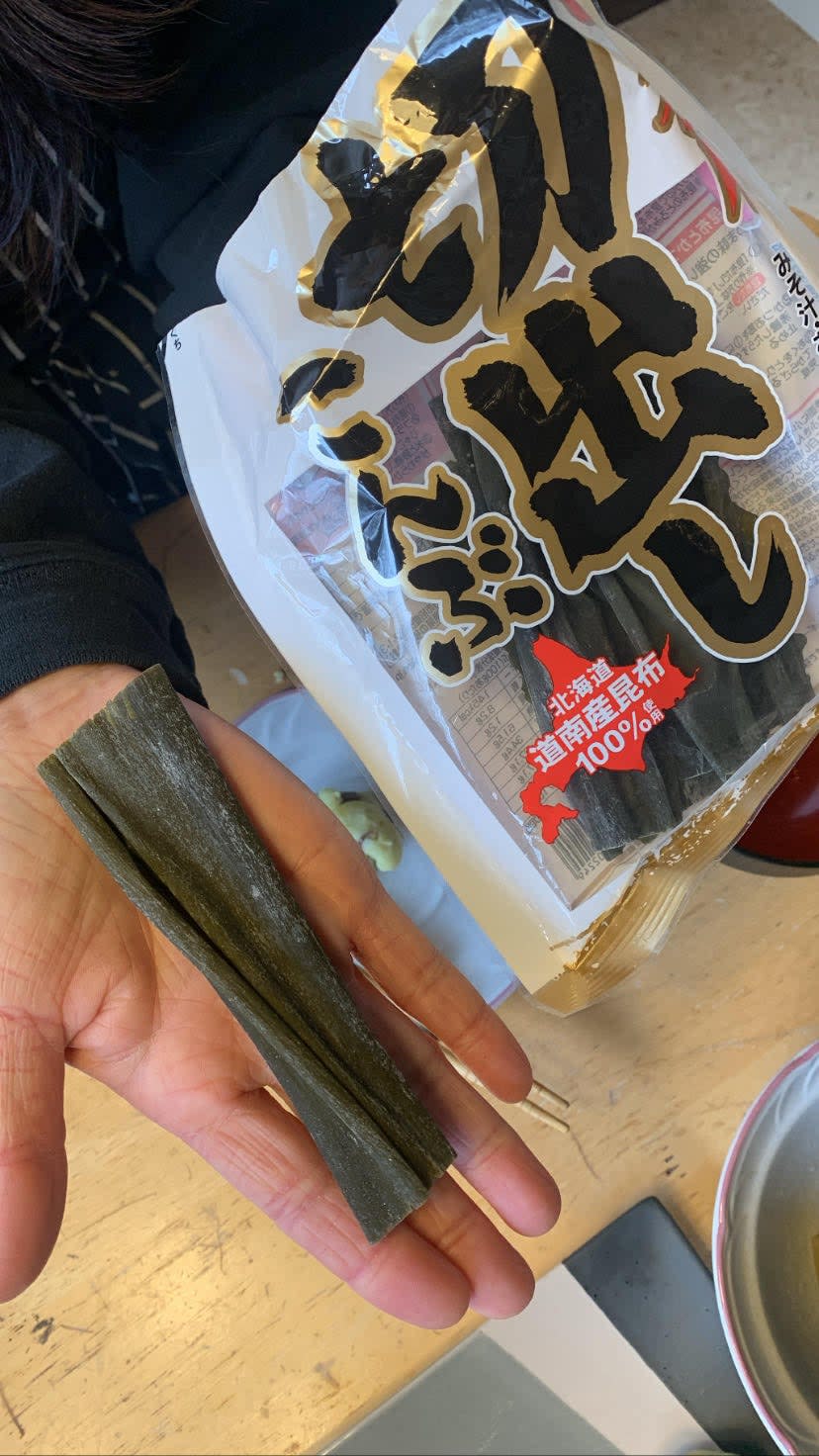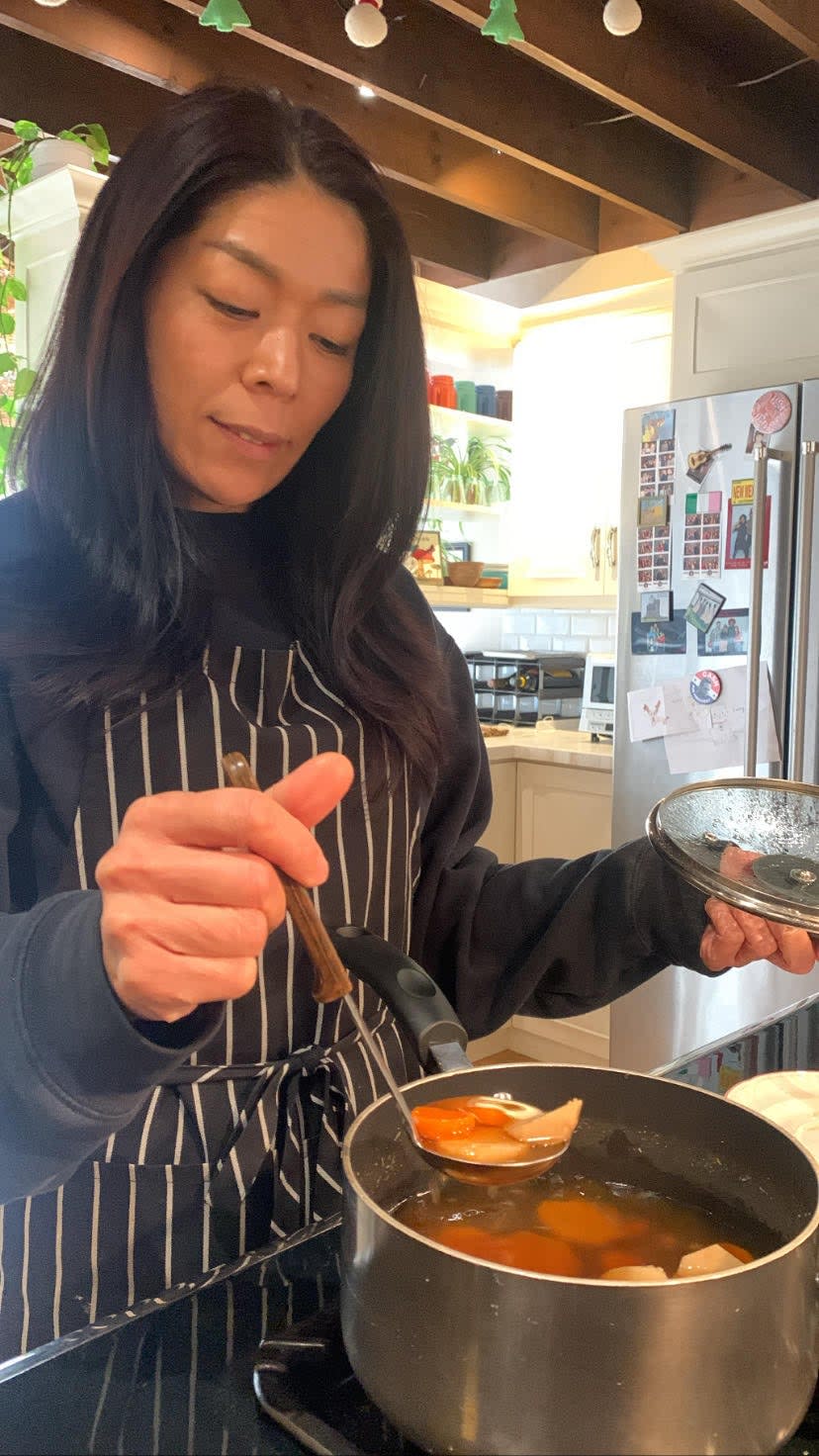Akesmashite Omedeto! Ringing in the new year, Japanese style


Moe Cheshire was born and raised in Kyoto, Japan. She and her family have lived in St. John’s for the last four years. (Nabila Qureshi/CBC)
In the heart of her kitchen, Moe Cheshire scoops a ladle of hot broth into a bowl of mochi cakes that will be topped off with garnishes in shades of pink and green.
This seaweed infused soup is called ozoni, the first meal usually served on the first day of Oshogatsu, the Japanese New Year that takes place from Jan. 1-3.
During these three days, family and friends will indulge in merrymaking centered around elaborately made meals, drinks, and customary activities — the first of which is a deep-cleaning of the house before New Year's Eve.
"I remember my dad and my mom and me and my brother just kept cleaning and cleaning and cleaning," said Cheshire when remembering her childhood, "until [there was] no more dust in the house."
In the night leading up to the 1st, the children would stay awake until the hush of night to receive a tasty snack.
"When the midnight comes, we had to eat Toshikoshi soba, which is Japanese soba noodles," smiled Cheshire, "and while you are waiting for this Japanese Toshikoshi soba, you had to watch a traditional Japanese music TV show called Kohaku on NHK — NHK is like the CBC in Canada."
After watching the television special, everyone would go back to bed only to wake up again in the wee hours to catch the first sunrise of the new year. For Cheshire, she and her immediate and extended family members would drive out to a nearby mountain to welcome the rising sun with a prayer for good fortune, before returning home to wine and dine. "I remember people would start drinking in the morning," chuckled Cheshire.

In her artistically decorated kitchen, Moe Cheshire offers a bowl of hearty ozoni soup. (Nabila Qureshi/CBC)
Among the many customs pertaining to celebrating Japan's most important festival, preparing and eating osechi, or traditional new year's dishes, takes the top spot. Traditionally, drinking ozoni is a must, but so is eating kuri-kinton — balls of mashed sweet potatoes with chestnuts that symbolize treasure or good luck.
For Cheshire, cooking ozoni is simple and takes less than an hour to prepare: in a pot of water, place a few pieces of dried kelp and a teaspoon of dried tuna powder (also known as dashi or bonito powder). Boil on a simmer until the stock tastes of seaweed. Stir in a tablespoon or two of soy sauce, along with a pinch of salt, and add a few pieces of chopped carrots and Japanese sweet taro. Cook until the vegetables soften. Serve this broth hot over mochi cakes topped with slivers of green onion.

Cheshire prepared a decorated plate of kuri-kinton (top) and ozoni soup. Cheshire’s mother often sends her some essential or special ingredients directly from Japan. (Nabila Qureshi/CBC)
For Cheshire, observing Oshogatsu in St. John's is a small and intimate gathering of some 50 Japanese community members. Over a potluck, people get together on Jan. 2 as the 1st is usually devoted to other local invitations from neighbours, friends, and peers. No celebration is complete without the customary greeting of Akesmashite Omedeto, or "Happy New Year."
There's no place like home
Cheshire and her family moved from Alaska to St. John's in 2019, due to her husband's job in the oil and gas industry. In remembering how she first got to know of Newfoundland and Labrador, she had an amusing story to tell.
"So I searched [online] for St. John's and what I saw was a tropical island with beautiful emerald green ocean. It's like Hawaii-looking, so I was like oh my gosh! Yes! I'm going to go to St. John's," Cheshire said to her husband, who was trying to ascertain whether his wife would be satisfied with the move. "Of course honey! What are you worried about? I will love the place. I'm going to put my bikini in my suitcase. He was like 'why are you going to bring your bathing suit?'"
Sensing something strange about her reaction, Cheshire's husband asked again, "Baby, I just want to show you the picture of where we're going, okay?"
Cheshire narrated, "What I saw was a hover view with covered snow. Looks like lots of colourful houses, which was beautiful. I liked it, but then I said 'wait a second, why does it look so cold? Where's my tropical island?'. Cheshire's husband remarked, "That's the wrong place. That's Saint John's [capital of Antigua and Barbuda] but it's not in Newfoundland."
"I was like, what is Newfoundland? Wait a second…", said Cheshire as she hooted with laughter.

Dried kelp, or seaweed, is an essential ingredient to making ozoni. One dried stick is usually enough to make a full pot of broth, and can be eaten or reused afterward. (Nabila Qureshi/CBC)
Although she enjoys spending Oshogatsu with her husband and her 13-year-old son and 7-year-old daughter, Cheshire longs to spend this auspicious time of happy gathering with her family back home in Japan.
"I want to go back to Japan," said Cheshire as she remembered her parents. "They are old but I just want to make ozoni with them. Buy some ingredients with my mom and make osechi food with my mom and call my cousins and call my other family. I don't have many family members like Newfoundlanders do here. It's 'ginormous' families here, but still, I want to get together with my family and want to have a new year with them, one more time, before everybody gets too old."

Ingredients for ozoni can be found at Asian specialty stores or at most supermarkets in St. John's. (Nabila Qureshi/CBC)
Download our free CBC News app to sign up for push alerts for CBC Newfoundland and Labrador. Click here to visit our landing page.


